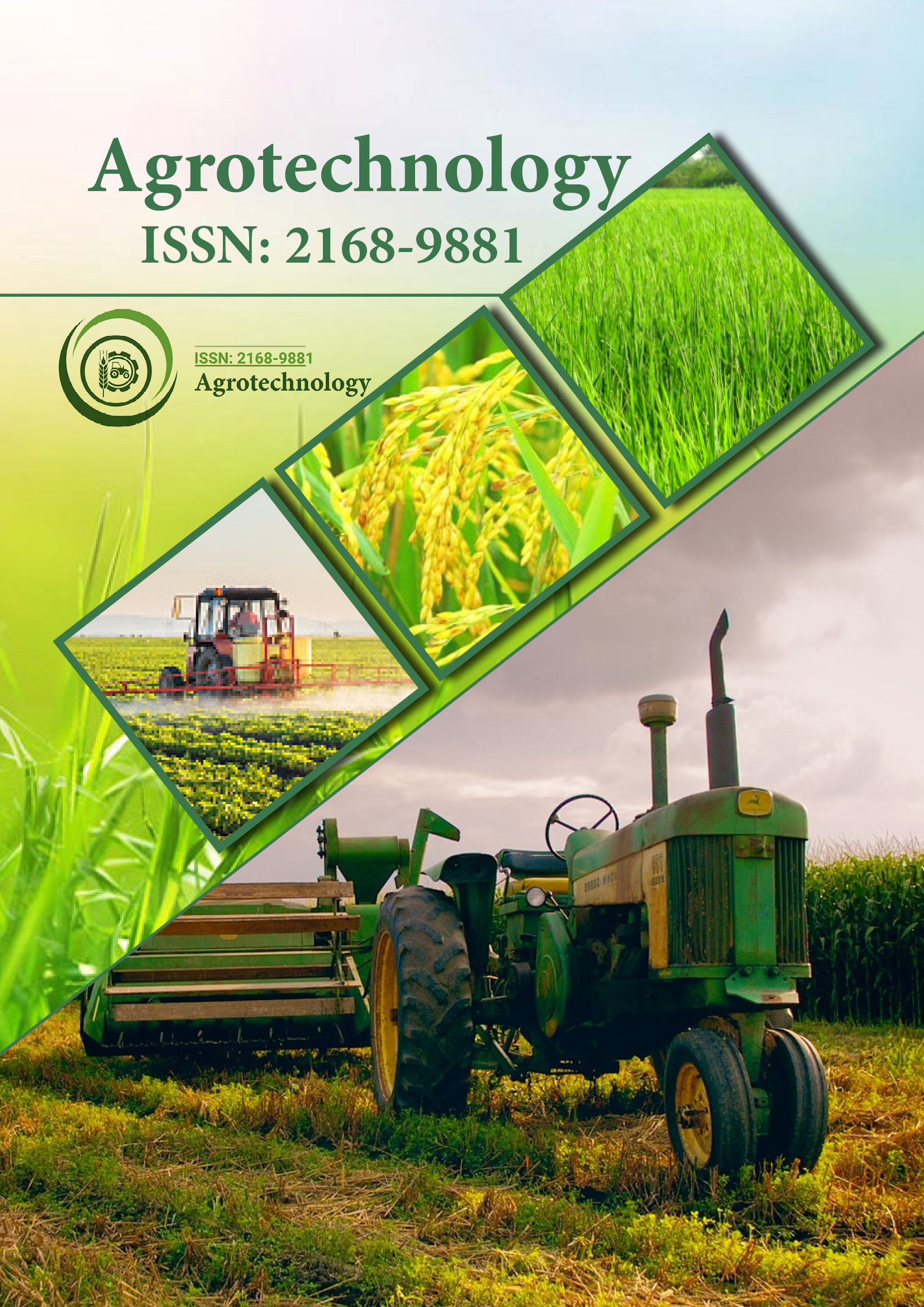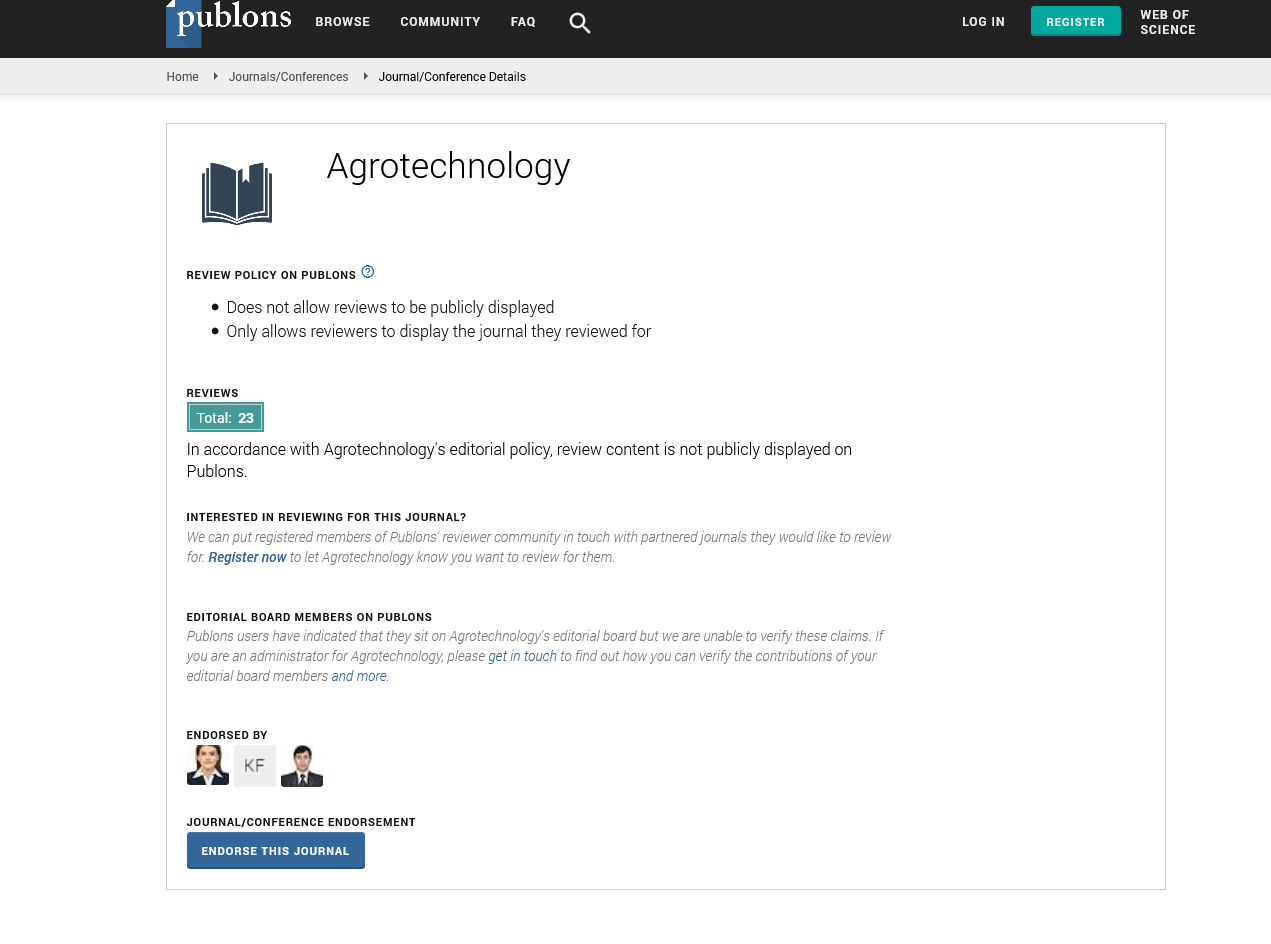Indexed In
- Open J Gate
- Genamics JournalSeek
- Academic Keys
- ResearchBible
- Cosmos IF
- Access to Global Online Research in Agriculture (AGORA)
- Electronic Journals Library
- RefSeek
- Directory of Research Journal Indexing (DRJI)
- Hamdard University
- EBSCO A-Z
- OCLC- WorldCat
- Scholarsteer
- SWB online catalog
- Virtual Library of Biology (vifabio)
- Publons
- Geneva Foundation for Medical Education and Research
- Euro Pub
- Google Scholar
Useful Links
Share This Page
Journal Flyer

Open Access Journals
- Agri and Aquaculture
- Biochemistry
- Bioinformatics & Systems Biology
- Business & Management
- Chemistry
- Clinical Sciences
- Engineering
- Food & Nutrition
- General Science
- Genetics & Molecular Biology
- Immunology & Microbiology
- Medical Sciences
- Neuroscience & Psychology
- Nursing & Health Care
- Pharmaceutical Sciences
Commentary - (2024) Volume 13, Issue 4
Hydroponics: Transforming Agriculture for Water Efficiency and Sustainability
Anna Lisa*Received: 29-Nov-2024, Manuscript No. AGT-24-27401; Editor assigned: 02-Dec-2024, Pre QC No. AGT-24-27401 (PQ); Reviewed: 16-Dec-2024, QC No. AGT-24-27401; Revised: 23-Dec-2024, Manuscript No. AGT-24-27401 (R); Published: 30-Dec-2024, DOI: 10.35248/2168-9891.24.13.392
Description
Hydroponics is a transformative approach to agriculture that minimizes water use while optimizing crop yields. This soilless cultivation technique uses nutrient-rich water solutions to grow plants, a method that stands in sharp contrast to conventional farming practices. Traditionally, agriculture relies heavily on soil and substantial volumes of water to nurture plant growth. However, with hydroponics, crops receive their nutrients directly through water systems, bypassing soil and significantly cutting down water requirements.
The primary advantage of hydroponics lies in its efficiency. In conventional farming, a large portion of water is wasted due to evaporation, soil absorption and runoff. Hydroponic systems mitigate this waste by creating closed-loop environments where water is continuously recirculated and reused. As a result, these systems use up to 90% less water than traditional methods, allowing farmers to grow more food using considerably less of this vital resource. By providing a controlled environment for plant roots, hydroponics ensures that plants receive precise amounts of water and nutrients, fostering optimal growth without excess consumption.
One of the unique aspects of hydroponic farming is its adaptability. These systems can be set up almost anywhere, from greenhouses to indoor spaces. This versatility allows for crop cultivation in areas with limited arable land or in regions experiencing drought conditions. Hydroponics not only makes it possible to grow food in unconventional spaces but also enables year-round production. Controlled indoor environments shield crops from weather extremes, pests and diseases, further increasing productivity. Consequently, farmers can harvest multiple cycles of crops annually, substantially boosting output without increasing water usage.
A wide variety of crops, including leafy greens, tomatoes, peppers and herbs, thrive in hydroponic setups. With careful monitoring and nutrient management, hydroponics can achieve higher yields per square foot compared to traditional agriculture. This efficiency is particularly valuable for urban agriculture and vertical farming, where space is at a premium. Vertical hydroponic systems use stacked layers to grow plants upward, maximizing spatial use and facilitating high-density farming. This spatial efficiency is complemented by water conservation, making hydroponics a highly sustainable approach for food production in dense urban settings.
The environmental benefits of hydroponics extend beyond water conservation. Because these systems are closed and controlled, there is minimal risk of nutrient runoff, which is a common issue in soil-based farming. In conventional agriculture, excess fertilizers and pesticides often wash into nearby water bodies, leading to pollution and eutrophication, which can harm aquatic life. Hydroponic farming reduces these risks by keeping nutrients contained within the system, promoting a cleaner, more sustainable method of agriculture.
Moreover, hydroponics supports the reduction of transportation-related emissions in food production. Many hydroponic farms are established near urban centers, reducing the distance food must travel to reach consumers. By shortening supply chains, hydroponics decreases fuel consumption and greenhouse gas emissions associated with food transportation. Additionally, because crops are grown in controlled environments, they require fewer pesticides, contributing to safer produce and reducing chemical exposure for consumers and farmworkers alike.
The economic implications of hydroponics are equally significant. While the initial setup costs for hydroponic systems can be high, the long-term savings in water, land and chemical inputs contribute to the cost-effectiveness of this method over time. Farmers can produce more crops with fewer resources, enhancing profitability and resilience. Hydroponic farms can be more labor-efficient as well, with automated systems for watering, nutrient delivery and climate control allowing farmers to manage larger crop volumes with reduced labor input.
Despite its benefits, hydroponics does have some challenges, including its dependency on energy for lighting, temperature control and water circulation. This energy demand can increase operational costs and environmental impact if non-renewable energy sources are used. However, as renewable energy sources become more affordable and accessible, hydroponic farms can increasingly operate on solar, wind, or other sustainable energy options, enhancing their overall sustainability.
In conclusion, hydroponics represents a sustainable, efficient and versatile solution to many of the limitations of traditional agriculture. Its ability to drastically reduce water usage, minimize environmental impact and adapt to various spaces makes it an attractive option for modern farming. As awareness of resource conservation grows, hydroponics offers a viable pathway for feeding populations without overburdening our planet's water resources.
Citation: Lisa A (2024). Hydroponics: Transforming Agriculture for Water Efficiency and Sustainability. Agrotechnology. 13:392.
Copyright: © 2024 Lisa A. This is an open access article distributed under the terms of the Creative Commons Attribution License, which permits unrestricted use, distribution, and reproduction in any medium, provided the original author and source are credited.


